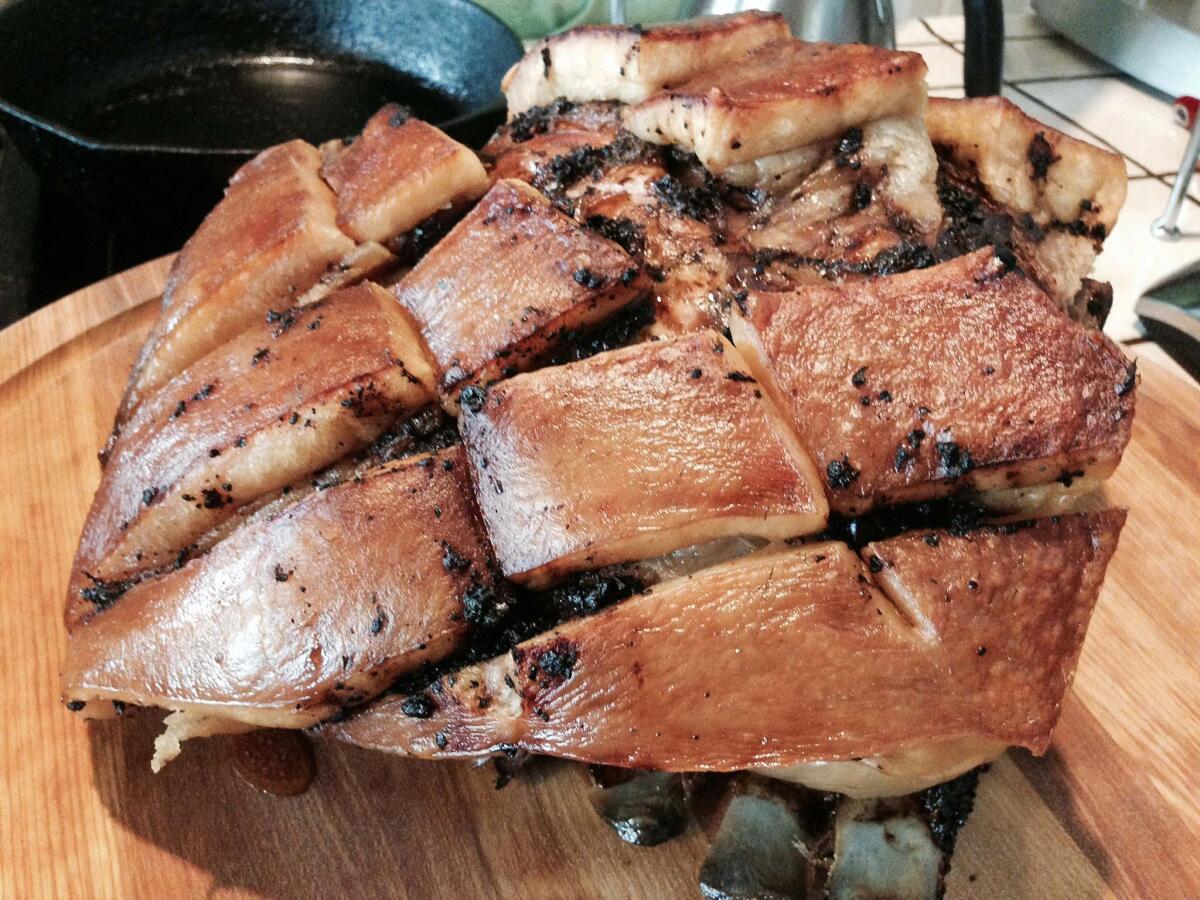Listen to your butcher, especially if you’re at McCall’s Meat and Fish

It is late afternoon at McCall’s Meat and Fish. The gleaming cases under the long counter fairly burst with pearlescent sea scallops and grass-fed Angus beef. The customers who straggle in rummage through packets of gravlax and stinky cheese on the refrigerated shelves before they get down to the serious business of what they might cook for dinner. Nathan McCall wanders in with a tiny baby girl in his arms, and for a moment my fellow carnivores and I are so overcome with the beauty of the newborn child that we briefly forget that we have come into the shop for meat.
But meat is never far from anyone’s mind at McCall’s, and before long, I am conferring with McCall about the big pork shoulder I had thought I might cook for Sunday lunch. He scratches his chin for a moment and hands the baby to his wife, Karen Yoo, who makes the splendid sourdough loaves, pastries and kouign amman that populate a corner of the shop.
I notice a pig carcass on a steel table in the back of the shop behind the counter, flayed open, ribs exposed, like the subject of a Francis Bacon painting. The animal had just come in from Cook Pigs Ranch, a small farm near Julian where the feed often includes local apples and avocados – you can sometimes find the pork on the menus of the kind of Los Angeles restaurants whose menus tell you who grew the artichokes. I had been lucky enough to score a chunk of one of its first pigs, which I roasted with rosemary and a big handful of fennel pollen.
The shoulder that McCall’s butchers cut, the first piece taken from the pig, was an enormous, clean-smelling piece of bone-on meat that harbored at least 2 inches of creamy fat under its skin. McCall wrapped it in plastic and weighed it, untrimmed, unrolled, untied. It was almost 15 pounds of pork.
“What am I supposed to do with this?” I asked.
“Slash the skin, rub it with garlic paste, roast it on a rack in a slow oven for eight or nine hours,” he said. “You might want to put a strong herb, oregano or marjoram, in with the garlic. And urfa – you’ve cooked with urfa haven’t you?”
“Of course,” I lied, although I had only seen the purplish black dried chile, named for the town in southeastern Anatolia that grows it, in the kind of cookbooks I spend more time reading than actually cooking from. Urfa biber is a fairly oily pepper, always sold dried and ground, that had a brief run in the food magazines a few years back, usually in recipes that called for it to be sprinkled on yogurt or added as an ingredient to exotic stews. It would not have been rubbed into pork in the city of Sanliurfa itself – known as the birthplace of Abraham, it has been solidly Islamic since the unpleasant last spasms of the Ottoman Empire – although urfa is supposedly used there to flavor ice cream.
McCall held out a pinch of the spice. It smelled of pipe tobacco and raisins. I bought a small bag. So, I might add, did the man behind me, who had come into the store for a pound of hamburger but ended up staggering out with his own armload of fresh pork.
This is the part where I’m supposed to be slightly self-deprecating about the faddishness of urfa, my own suggestibility, and the ways that Yotam Ottolenghi is changing the palate of foodie America. And in fact when I made the spice paste – six cloves of well-minced garlic, a couple of tablespoons of fresh marjoram leaves, another couple of urfa, some coarse salt and a splash of olive oil, if you’re following along at home – the aroma was closer to the spice aisle of an Armenian grocery store than it was to anything I had ever cooked.
But I slashed the skin and the fat of the pork shoulder into large diamonds, worked the paste into the crevices of the meat, and stuck it into a 225-degree oven. Nine hours later: crackly skin, subtle smokiness, tastes of forests and chestnuts, and pure juicy meat. It may have been the best pork I’d ever cooked.
Is the moral here that you should listen to your butcher? I’m not sure, but it would be a start.
ALSO:
Jonathan Gold: A soulful cauliflower taco
Juicy Tijuana-style tacos at Carnitas El Veneno
10 white wines for the waning days of warm weather
More to Read
Eat your way across L.A.
Get our weekly Tasting Notes newsletter for reviews, news and more.
You may occasionally receive promotional content from the Los Angeles Times.










